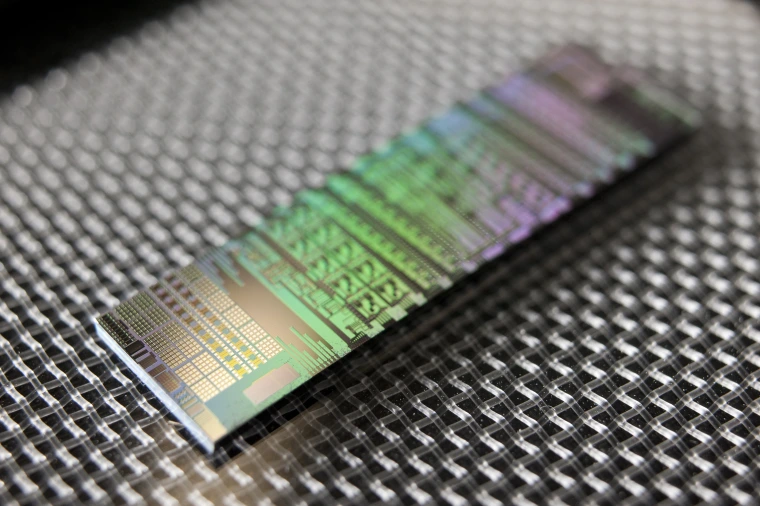
Jacob Chinn, University of Arizona Alumni Association
University of Arizona researchers have developed several technologies for quantum computing in the areas of security, communications, sensors, devices, and more.
All of these technologies are currently available for licensing.
If you're interested in learning more about a technology or would like to inquire about a licensing opportunity, please contact Ann Chihak Poff at annc@tla.arizona.edu or 520-626-1577.
Learn more about the University of Arizona's collaborative effort to establish and lead a new National Science Foundation Engineering Research Center called the Center for Quantum Networks.
Quantum Computing using Phononics and Waveguides
Phonon Based Room Temperature Quantum Computer (UA17-138)
This invention offers a new solution for quantum computing through materials-based and phonon-based quantum analogues.
Quantum Computing using Entangled Photons
Quantum Computing for Communications and Networking
Entanglement-Enhanced Machine Learning (UA19-130)
This technology increases the performance of machine learning through quantum entanglement, which gives application for ultra-sensitive measurements in biological, thermal, and mechanical systems.
Photonic Machine Learning with Wavelength/Frequency Multiplexing (UA20-117)
This method utilizes nanophotonic devices that have more degrees of freedom to implement neural networks, which allows for neural networks to be expanded.
Photonic Quantum Computing Using Entangled Squeezed State Clusters (UA19-151)
This is a scalable method for quantum computing that uses photons as a way for encoding a qubit.
Surface Codes Based Quantum Networking (UA20-234)
This invention uses surface codes to implement an extendable quantum communication network.
Circularly-Symmetric Companding Quantization-Inspired Hybrid Constellation Shaping for APSK Modulation to Improve Power Efficiency (UA21-068)
This technology is an improved amplitude phase shift keying (APSK) with better constellation power efficiency in Gaussian-noise-limited channel, suitable for applications in power-limited communications.
Quantum Random Number Generator (UA20-145)
This is a method that leverages quantum computing systems to generate numbers that are guaranteed to be random at the highest rate allowed by current methods.
Quantum Information Science
Non-Gaussian Photonic State Engineering with the Quantum Frequency Processor (UA22-012)
This technology is a means of generating non-Gaussian quantum states in light for use in quantum computing.
Heralded-Multiplexed High-Efficiency Cascaded Source of Dual-Rail Polarization-Entangled Photon Pairs using Spontaneous Parametric Down Conversion (UA22-006)
This technology is a high-efficiency, high-fidelity method of generating pairs of polarization-entangled photonic qubits.
Quantum-Enhanced Gyroscopes (UA21-269)
This technology is a new type of laser gyroscope that makes use of concepts of quantum squeezing and quantum entanglement to offer improved sensitivity over existing laser gyroscopes.
Receiver Design for Entanglement-Assisted Classical Communication (UA21-183)
This technology is a new type of receiver for entanglement-assisted classical communication, that is ideal for applications with noise or weak signal strength, and improves communication rates over existing solutions.
Quantum Message-Passing Receivers for Quantum-Optimal Laser Communications (UA21-080)
This technology is the first fully structured design of an optical joint-detection receiver that can attain the quantum limit of laser communication.
Quantum Computing Sensors and Devices
Reconfigurable Entanglement-Enhanced Microwave Photonic Sensors for Navigation, Imaging, and Communications (UA20-016)
This technology uses multipartite entanglement to enhance the sensitivity of microwave photonic sensors to improve performance and accuracy.
Quantum Computing Security Methods
FPGA-Based Rate-Adaptive Spatially-Coupled LDPC Codes for Optical Communications (UA19-211)
This invention is a rate-adaptive forward error correction (FEC) scheme based on spatially-coupled (SC) LDPC codes. It provides larger coding gain and smaller error floor compared to QC-LDPC, making it a promising candidate for the next-generation intelligent optical communication systems.
Secure, Global Quantum Communications Networks (UA20-201)
This technology aims to provide global coverage via terrestrial quantum networks connected to low earth orbit satellites in conjunction with a subnetwork of medium and greater earth orbit satellites.
Atmospheric Turbulence-Controlled Cryptosystems (UA21-052)
This technology is a new type of cryptosystem that leverages atmospheric turbulence to protect free-space optical communication from eavesdropping.
Joint QKD-Post-Quantum Cryptosystems (UA20-185)
This technology is a joint quantum key distribution (QKD) that is used for raw-key transmission and post-quantum crypto-system to transmit parity bits for information reconciliation.
Quantum Computing Architecture
Quantum Computing Architecture based on Large Scale Multidimensional Continuous-Variable Cluster States in a Scalable Photonic Platform (UA20-162)
This technology is a one-way quantum computing architecture that is based on programmable large-scale continuous variables states.
General Recipe for Designing Quantum Optimum Receiver Architectures Using Machine Learning (UA19-140)
This technology uses machine-learning to generate the quantum optimum receiver architecture beyond reach of human design.
Other Quantum
High-Quality Integrated Squeezed-Light Sources based on SiO2 Wet Etching (UA21-270)
This technology is a method of creating components that generate light in a squeezed state.
Quantum Receivers for Entanglement Assisted Communications and Sensing (UA21-159)
Entanglement Assisted Communication (EACOMM) and quantum computing is the future for many different industries.
If you're interested in learning more about a technology, or would like to inquire about a licensing opportunity,
please contact Ann Chihak Poff at annc@tla.arizona.edu or 520-626-1577.

